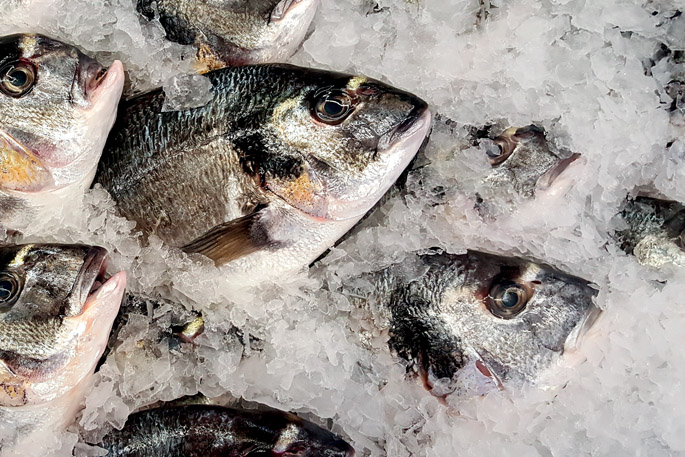All the experts tell us the best way to keep your fish fresh, is to immediately plunge it into a slurry of salt ice.
By the time you get home, the fish flesh will have set, be easy to fillet and the goodness and taste retained to the maximum.
The salt ice slurry is best, because it holds the temperature down, but not so ice-cold that the flakes in contact with the flesh ‘burn’ the fish.
Fresh water ice isn’t as good, in fact has a detrimental effect on salt water fish.
The science behind this is fascinating.
Salt in water has quite an effect. When cooled, salted water needs a lower temperature to reach freezing, so salt ice is actually colder. Which is why it stays colder, longer. It’s got a head start on standard ice.
There’s another tricky science thing going on between fish, water and salt.
Seawater fish swallow water as they go about their fishy day. This is because fish naturally have less salt content than the water they’re swimming in. Water migrates to balance concentrations, so effectively the water in fish cells moves out of the fish to try to ‘balance’ the higher concentrations of salt outside their bodies. So to avoid dehydration, fish are constantly drinking seawater to make up for this effect.
Therefore, when you plunge a fish into a slurry of salt ice, the concentrations inside and outside are more or less the same, so there’s little movement of water between the two, avoiding loss of flesh quality.
However, if a salty fish is plopped into fresh water slurry, the salt concentration is much higher in the fish than the surrounding ice, water moves into the fish, attempting to reach equilibrium, meaning the flesh is spoilt by water ingress and the fish goes softer the longer its left there.
Logically, the same principles apply for freshwater fish. They’re best stored in freshwater slurry, or they will dehydrate as the water balancing phenomena goes to work.
Some astute fishos make their own salt ice. It can have a lower salt concentration than standard ocean water. About two teaspoons per 10 litre bucket makes a solution matching the salt water fish’s salt concentration, meaning the water movement between the flesh and slurry will be minimised and creating the best keeping qualities for your catch.



0 Comments
Leave a Comment